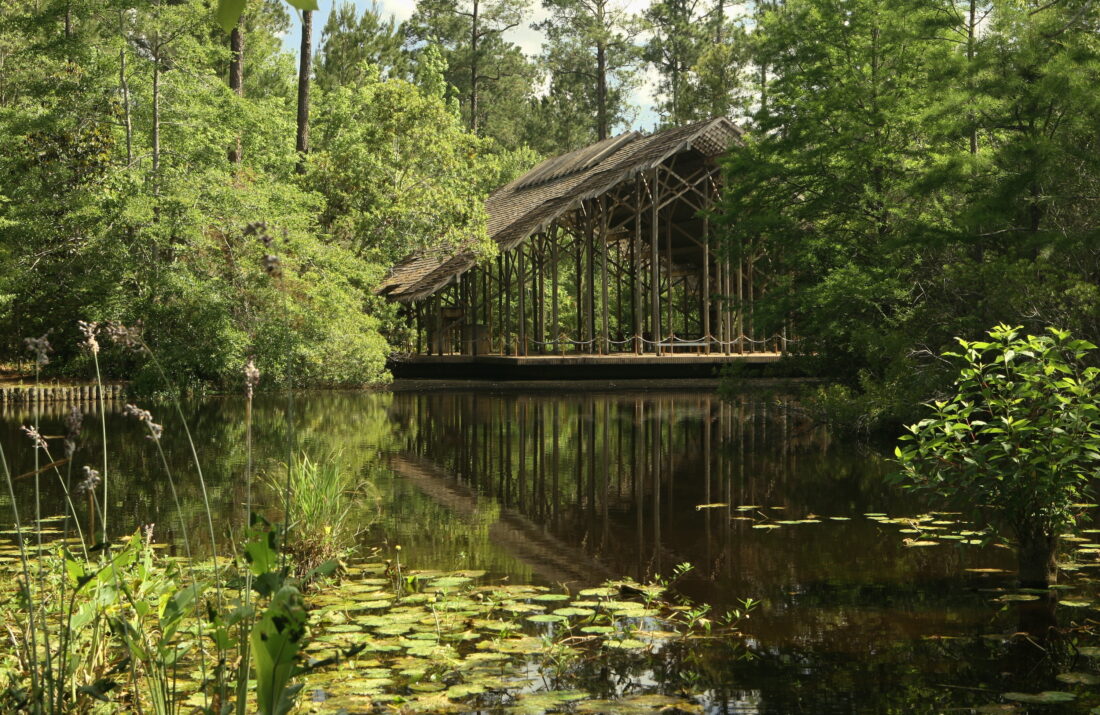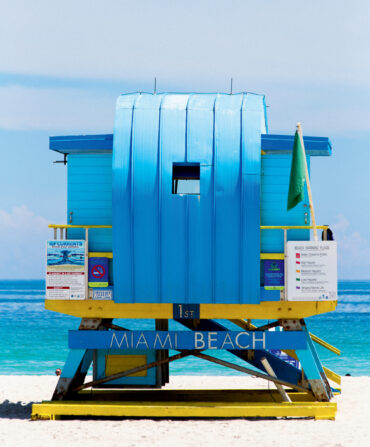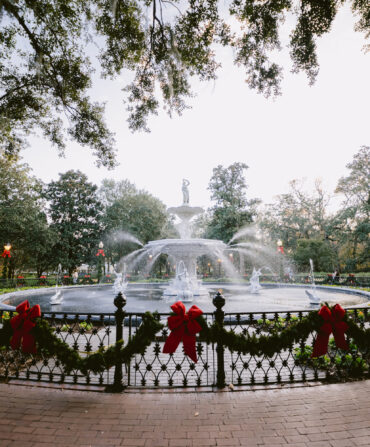Like youth itself, college campuses shouldn’t be wasted on the young. From the Research Triangle to Austin, campus gardens and arboretums serve as sylvan refuges and research centers for students, their professors, and the public. Here are seven of our favorite Southern collegiate environments in which to explore, relax, and, yes, learn—no midterms required.
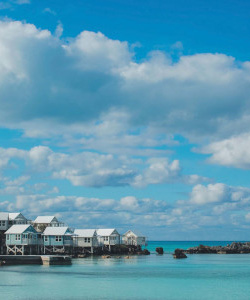
Three Standouts in the Research Triangle
North Carolina
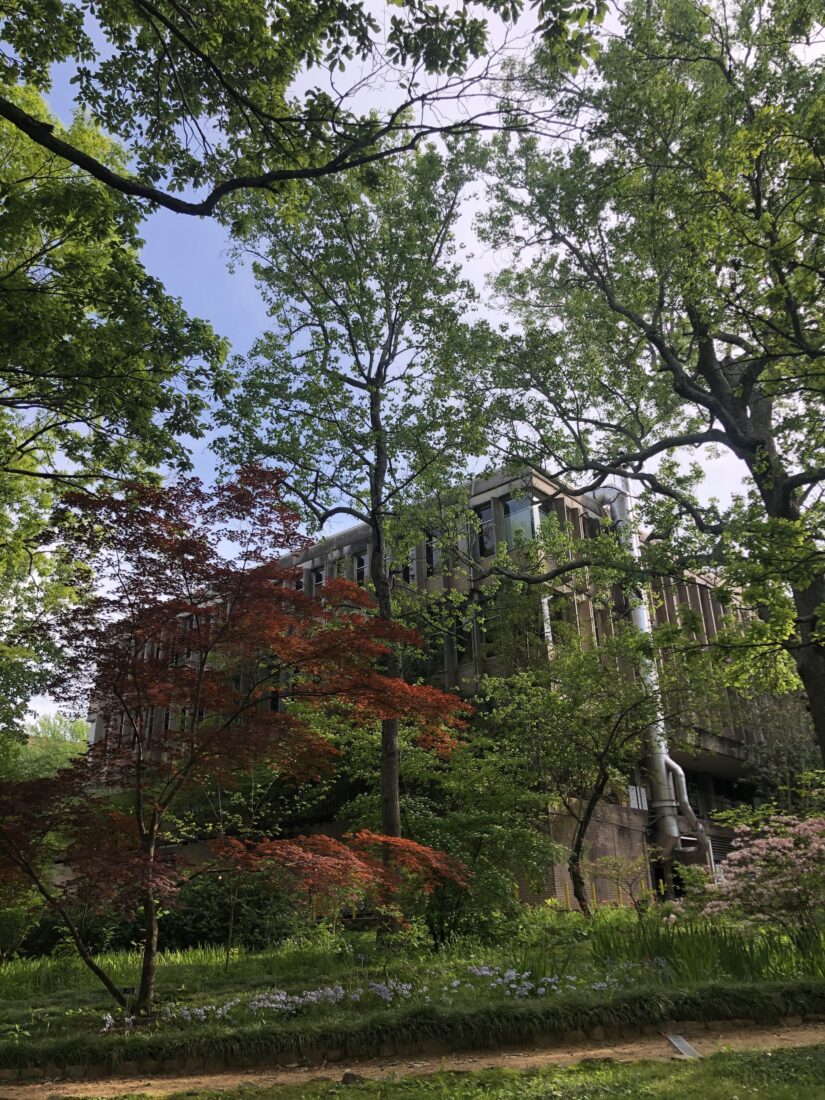
Is arranging Duke, UNC Chapel Hill, and NC State in a single bouquet fair? No, but otherwise, these campus gems would three-peat on our list. The gardens are just that good, it’s worth considering them all if you’re in the area. The Sarah P. Duke Gardens in Durham meander with reflecting pools, diverse planting areas, and serene trails. In Raleigh, the ten-acre JC Raulston Arboretum at NC State celebrates everything botanical, including what’s dubbed Asian Valley, perennial species by the thousands, and an energy-efficient rooftop garden. UNC’s Coker Arboretum in Chapel Hill is dotted with delightful sitting spots reminiscent of an estate’s secret garden.
Edith J. Carrier Arboretum
James Madison University
Harrisonburg, Virginia
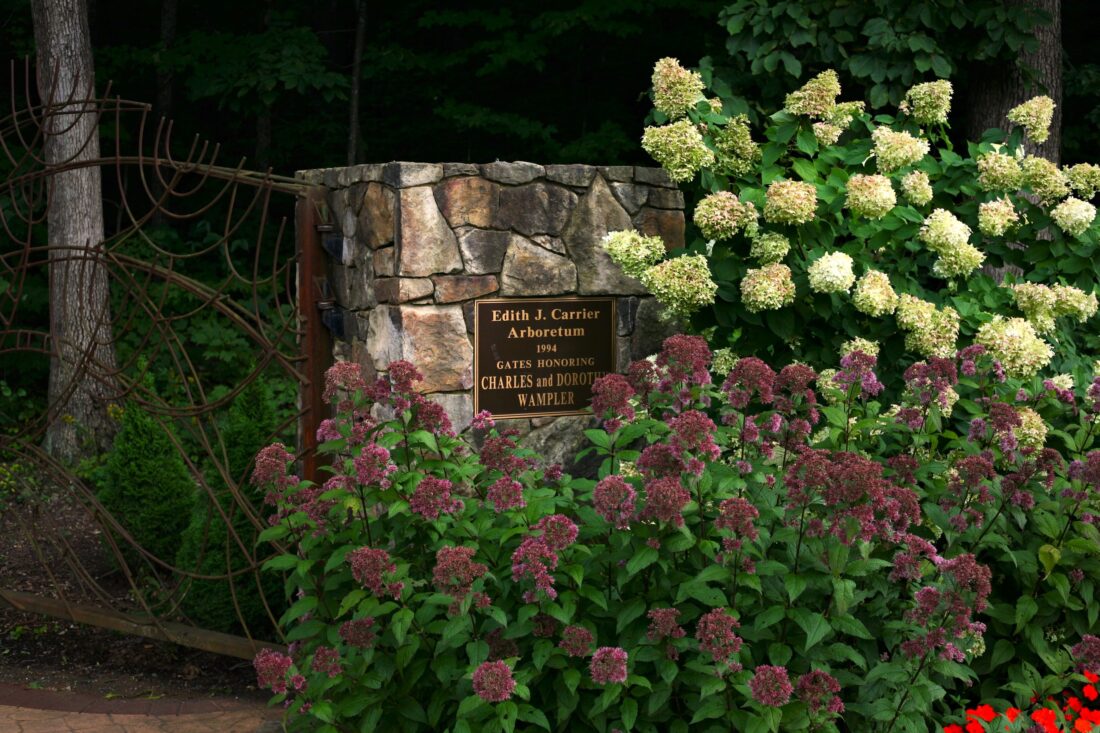
The Carrier Arboretum fulfills all the elements of an on-campus sanctuary. Visitors from preschool age to seniors can take classes and learn about plants, insects, and other members of the natural community. The 125-acre environment offers over three miles of trails and hosts a variety of “restoration recreation,” including forest bathing, labyrinth walking, and turtle viewing.
Crosby Arboretum
Mississippi State
Picayune, Mississippi
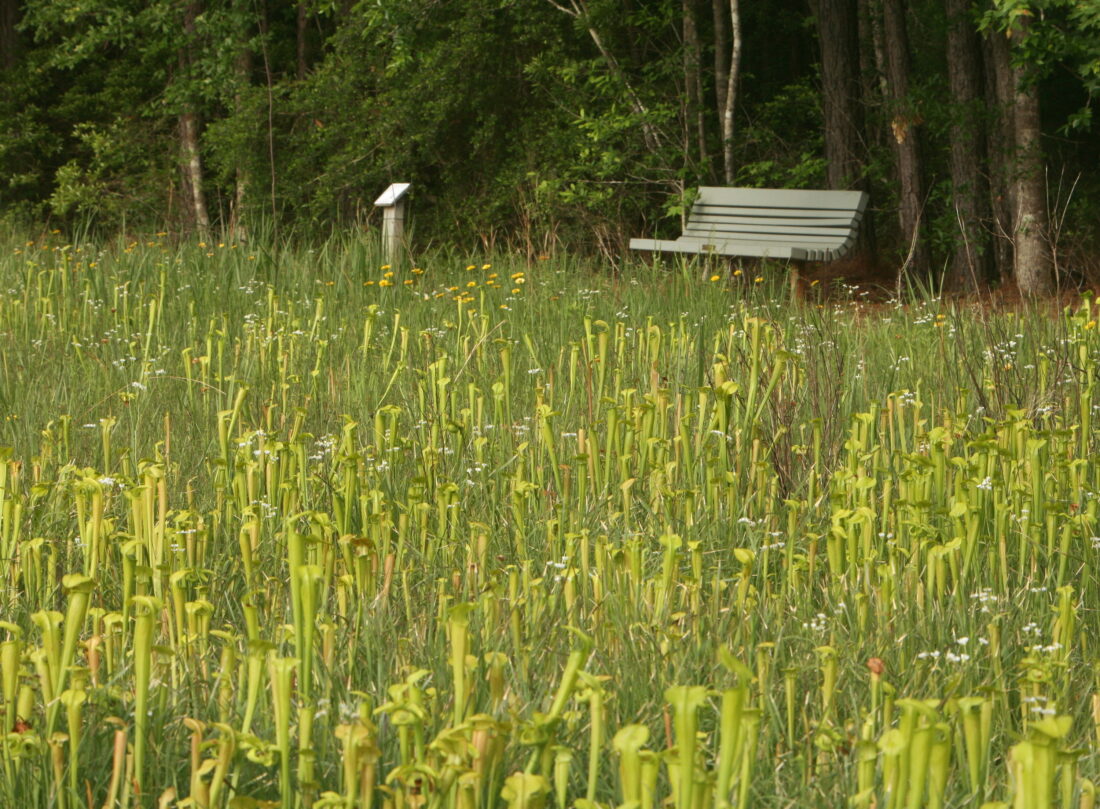
No two arboretums look alike, but only a few tree galleries feature a swamp forest like the Crosby. The Pinecote Pavilion dazzles event attendees almost as much as the sprawling Native Plant Center, the largest of its kind in the Southeast. Visitors will find more than three hundred indigenous plant species—longleaf pine, pitcher plants, a woodland featuring all five of Mississippi’s native magnolia varieties—among seven hundred acres of boggy botanical habitat.
Lady Bird Johnson Wildflower Center
The University of Texas
Austin
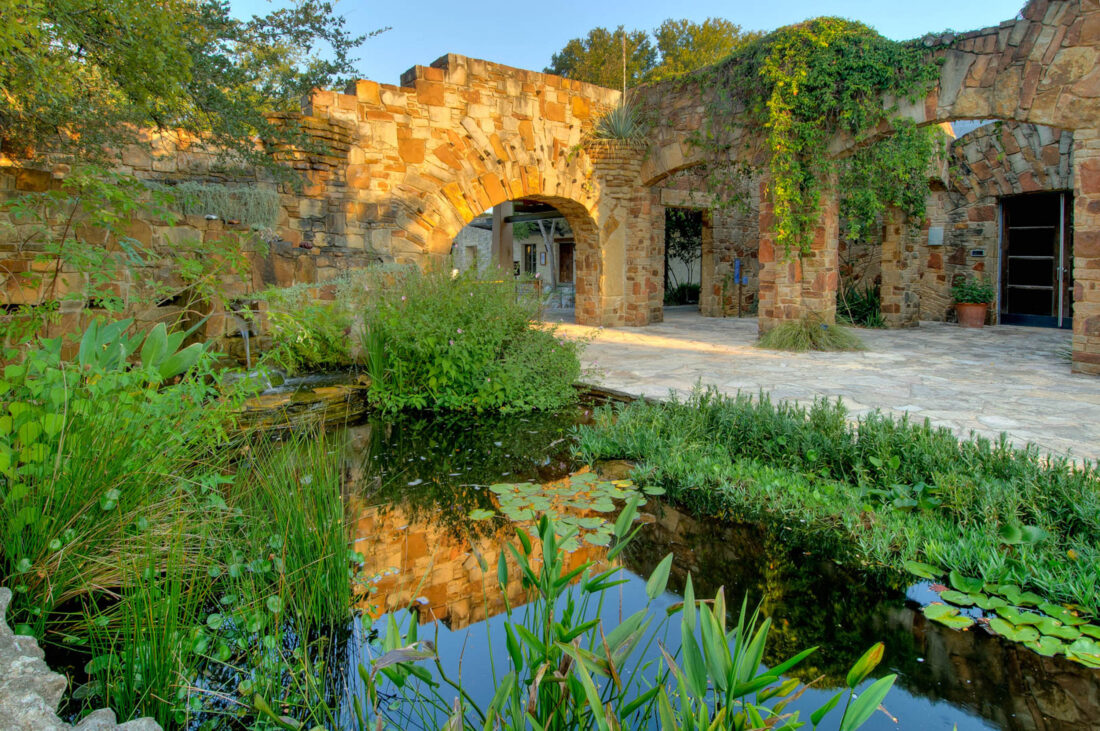
The Lady Bird Johnson Wildflower Center is known around the world for its expansive tracts of beautiful blooms and native flora. The 284-acre botanical hub includes an arboretum, managed natural areas, and wildlands. In addition to gorgeous gathering areas, U.T.’s College of Natural Sciences utilizes the Center’s environments for student and public programming. The staff updates a weekly what’s in season list, and fall blooms include lavender-petaled autumn sage, Rio Grande globe amaranth, yellow partridge pea, and crimson Turk’s cap.
South Carolina Botanical Garden
Clemson University
Clemson, South Carolina
South Carolina Botanical Garden at Clemson University curates one of America’s largest collections of nature-based outdoor art, where some of the installations are gradually returning to the mossy, ferny earth. Recently reopened after its staff cleaned up debris from Hurricane Helene, this outdoor haven and sculpture garden presents an alchemy of art, the elements, and the environment. As the weather cools, the garden’s original purpose comes into full focus: In 1958, it began as a camellia preserve, and the colorful “winter rose” beauties bloom in pops of pink, white, and red.
University of Tennessee Gardens
Knoxville, Tennessee
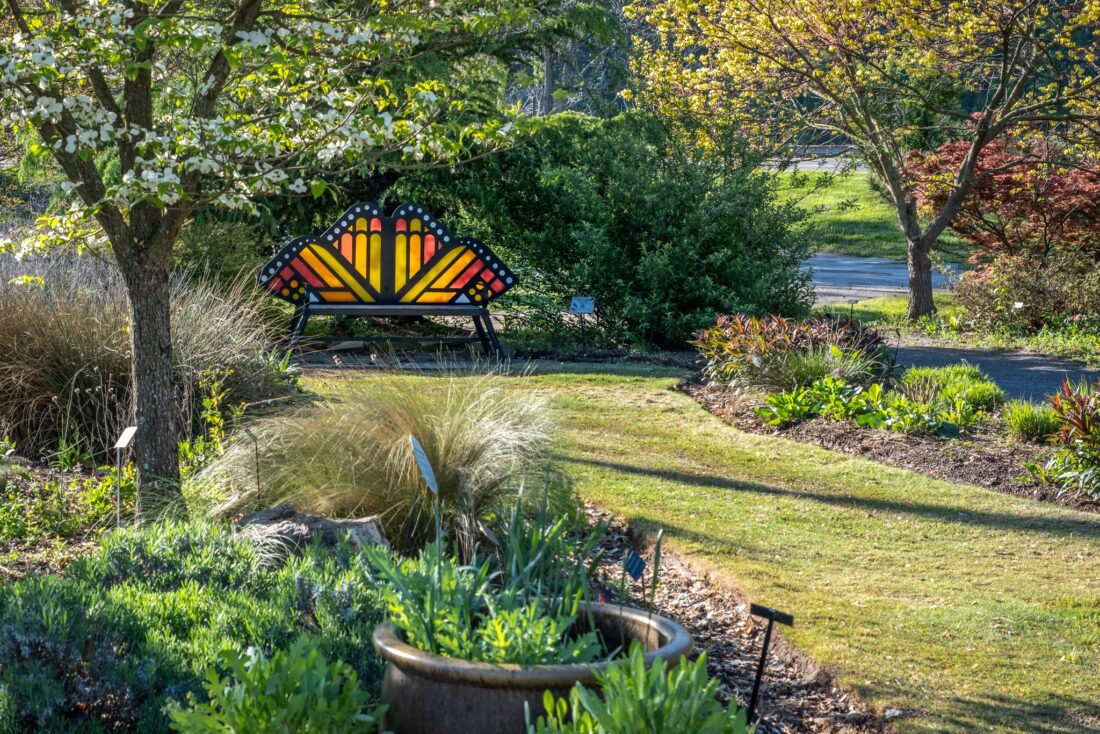
University botanical gardens provide the public with more than plant sales and paths among assorted flora. They are testing grounds for everything from seed and hybrid development to managing changes in the environment to trialing varieties of boxwood. One of just thirty-four test sites in the U.S., UT Gardens Knoxville evaluates annual bedding plants in addition to presenting a Wetland Garden, Rock Garden, and a Children’s Garden with a treehouse and green-roofed playhouse to plant a seed in the minds of the littlest gardeners among us.
University of Central Florida Arboretum
Orlando
Most arboretums focus on conifer and deciduous trees grown for display and study. The UCF Arboretum certainly honors its longleaf and sand pines but also adds hundreds of acres of wetlands to its over eight hundred acres of natural habitat. Student interns specialize in sustainability, conservation, and education, and they just might be around to answer questions after you ramble through the shady public hiking trails that wind throughout the scenic expanse of cypress and pond pine.


